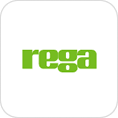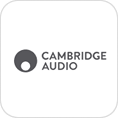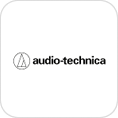‹ Back to the homepage About Kadaza Tips
All Music Arts & Culture Shopping
Record Players
November 16, 2021 (Last updated: November 22, 2021)

An easy guide to Record Players
Streaming music may be more convenient and easy, yet more and more people are buying music on vinyl. Vinyl records are in-demand; they seem to have the cool factor over CDs and streaming. As well as being fashionable, there's an unmistakable listening experience with vinyl that no other format can replicate. There are apparently still plenty of reasons to listen to vinyl records. You know you want to listen to vinyl, but you aren't sure which record player you need? This simple guide to record players will help you make the right choice and ultimately get the best listening experience possible.
Kadaza is reader-supported. When you buy through links on our site, we may earn an affiliate commission.
Types of Record Players
Assuming you aren't looking for a vintage Gramophone, there are three types of record players: manual, automatic, and semi-automatic.
The difference is in how the needle is placed on the record. A manual system requires you to lift and place the arm/needle yourself. An automatic system does it automatically at the touch of a button. Semi-Automatic systems require the needle to be set manually, but it lifts off by itself.
 In addition to its large selection of records, Amazon offers the Vinyl of the Month Club subscription. Curated by experts at Amazon Music, the Vinyl subscription box brings you the greatest albums to come out of the 1960s and ’70s. Once joined, you'll receive one must-own record from the Golden Era of Vinyl each month. Perfect for the music lover who's just fallen for analog sound. Ad
In addition to its large selection of records, Amazon offers the Vinyl of the Month Club subscription. Curated by experts at Amazon Music, the Vinyl subscription box brings you the greatest albums to come out of the 1960s and ’70s. Once joined, you'll receive one must-own record from the Golden Era of Vinyl each month. Perfect for the music lover who's just fallen for analog sound. Ad
How to Choose the Right Record Player
 Choosing the right record player comes down to a few different things, but we wouldn't make the type of record player a deciding factor. If you're worried about the process of placing the needle, don't be, it's easier than you think, and we'll give you a little step-by-step guide below.
Choosing the right record player comes down to a few different things, but we wouldn't make the type of record player a deciding factor. If you're worried about the process of placing the needle, don't be, it's easier than you think, and we'll give you a little step-by-step guide below.
Define your Budget
As with anything, you should work with a sensible budget, and that doesn't just mean as much as you can afford. You don't have to break the bank for your very first record player, even if you can afford it. You wouldn't buy a vintage Strat before your first guitar lesson, or at least you shouldn't. So, work within a budget that is both affordable and sensible. While we never advocate needlessly over-spending, you don't want to cut every corner either.
An ideal starting point for a beginner is the Audio-Technica AT-LP120XBT-USB. The Fluance RT81 is an excellent alternative. As an extension of budget planning, you should think about the features that you need most.
With or without speakers?
Most budget-friendly record players have built-in speakers, so it wouldn't be wise to max out on a mid-level unit and be left without sound. It's worth noting that turntables without a built-in speaker may require an external preamp, too, as they may lack the power to drive speakers. The more extras you need to buy, the harder it is to stick to the budget.
Speed (33⅓ / 45 / 78 rpm)
Just about every record player will spin records at speeds of 33 1/3 and 45 rpm, but if you want to spin 78 rpm records, you'll have to find a suitable player. This function is more sought after by people who have older records in their collection since 78 rpm records are a thing of the past.
USB & Bluethooth connectivity
Features like USB and Bluetooth connectivity are common in many record players. Bluetooth allows you to connect to wireless speakers, and so on. USB lets you record the playback of your vinyl in real-time, complete with crackle. That makes USB an excellent feature for any music producer looking to sample vinyl quickly and easily.
Use of the record player
There are different reasons for buying a record player, and your reason will play a massive part in your decision. Whether you need a record player for practical use, like sampling, or you want the complete audiophile listening experience should give you an idea of which units will suit you.
Direct-drive or Belt-drive?
If you're new to record players, you'd be forgiven for asking what the difference between the two is. Luckily, the answer isn't full of technical jargon; it's rather simple. A direct-Drive record player employs a motor underneath the platter, which rotates it directly. A Belt-Drive record player offsets the motor and uses a thin rubber belt wrapped around the spindle to rotate the platter. That's it; there's not much else to it.
Having said that, both systems have pros and cons that you should consider before buying. There's no definitive answer to which is better; it depends entirely on how you plan to use your record player. If we had to simplify the decision, you could say Direct-Drive is best for performance, and Belt-Drive is best for overall playback quality. But, those stereotypes can change slightly from one record player to the next.
Direct-Drive
Pros
• Faster start-up time (consistency)
• Great for DJs
Cons
• More prone to distortion
Belt-Drive
Pros
• Less prone to vibration and distortion
• Potentially higher playback quality
Cons
• Slower start-up speed
• Needs to be replaced
DJs often favor Direct-Drive systems because they can reach the correct speed faster than a Belt-Drive system. The faster start-up time means DJs can stop, rewind, and manipulate playback with more confidence. Being directly connected to the platter means the motor generates more torque, and that's why the start-up speed is so reliable. The downside is that more vibrations are transferred from the motor to the platter to the cartridge, resulting in distortion.
One of the immediate benefits of a Belt-Drive system is that the rubber belt dampens the vibrations to some extent, avoiding unwanted distortion. Although, if any part of the mechanism, like the belt itself, the spindle, or the platter, isn't perfectly made, it can throw the system off a little and reduce playback quality.
The obvious disadvantage is that a belt can't produce the same speedy start-up time and consistency of a Direct-Drive system. Some Belt-Drive record players will use two motors to improve performance in this area. Another downside is that you should expect to replace the belt every couple of years.
Some factors play a big part in how either drive system performs, none more so than the main bearing. A loose bearing will decrease accuracy, increase noise, and potentially lead to significant damage whether you go Direct-Drive or Belt-Drive.
What Is a Preamp, and Do I Need One?
Preamps are often misunderstood and sometimes over-complicated. So, we will keep this explanation as simple as possible. The first thing you have to understand is line level. Line level refers to the standard signal strength/amplitude for consumer and professional audio equipment. There are two types of line level; -10 dBV for consumer audio gear and +4 dBu (1.23 volts or higher) for pro-audio gear.
In simple terms, for an amplifier or speaker system to process the incoming signal, it has to be at line level; otherwise, it's too weak. A record player cartridge produces a phono output, which is far weaker than line level. If you connect a phono output directly to a line level input, you'd have almost no volume at all. The sound you can hear would also be dramatically lacking in bass frequencies. So, a preamp is a step that converts (boosts) the phono signal to a line level signal. It's that simple, and that's why you need a preamp.
A preamp also applies some EQ that delivers the same flat frequency curve as a line level signal. When a record is cut, the bass frequencies are reduced, and the treble is boosted. Without going into too much detail, the main reason for this is that the bass frequencies have wider grooves that take up more space on the vinyl record. The EQ applied to counter this issue is known as RIAA equalization. The result is that the bass is boosted, the treble is decreased, and a flat frequency curve is achieved.
Many record players, especially modern budget units, have a built-in preamp. A built-in preamp is often referred to as the phono stage. If a record player has a line output or USB, it has a built-in preamp. Technically, it means you do not need an external preamp, but you could still add one if you feel it offers higher quality than the built-in option.
You tend to find built-in preamps in cheaper units and not in high-end record players because high-end options focus purely on the optimal audio quality. In most cases, the optimal audio quality is achieved via dedicated devices rather than built-in add-ons.
 If you want to test the accuracy of your player's speed, there are some free apps that make it easy, like the RPM Calculator for Android and RPM - Turntable Speed Accuracy for iOS.
If you want to test the accuracy of your player's speed, there are some free apps that make it easy, like the RPM Calculator for Android and RPM - Turntable Speed Accuracy for iOS.
How to Use a Record Player
Before you use your record player, make sure it's positioned in a suitable location. The record player will turn any excess vibration to sound (hum), so make sure you have an even surface, and consider adding some cheap isolation pads/feet.
1. Lift your vinyl by the edges, making sure no oil from your fingers/hands gets on the surface.
2. Line up the center hole in the record with the spindle on the player, then carefully place the record on the turntable.
3. Make sure your turntable is set to the correct speed.
4. Lift the tonearm and gently place the needle on the outer edge of the record. DO NOT scratch the needle across the record. If you have an automatic record player, use the tonearm button.
5. When finished, carefully reverse the process and place the record back in its sleeve. When handling the record, be mindful of dust, dirt, and scratches at all times.
 Recent years we've seen a resurgence of vinyl records amongst fans, new and old. Check out our comprehensive vinyl guide and discover why many people still love vinyl.
Recent years we've seen a resurgence of vinyl records amongst fans, new and old. Check out our comprehensive vinyl guide and discover why many people still love vinyl.
The best online stores to buy a record player
Before getting into the best places to buy records online, you shouldn't discount physical record player stores. Hitting the record store and physically experiencing and testing the various record players is part of the overall experience. Here are some of the best places online to buy a record player.
Amazon is the go-to store for just about anything these days. We like it because it has a wide range of record players, and it's easy to compare different models. Amazon might be the best place to start for anyone who doesn't yet know precisely what they need/want.
eBay is a fantastic way to buy any audio gear. People sometimes forget that you can purchase new equipment directly from many manufacturers/resellers on eBay; it's not just used gear. The best thing is you can compare the new versus used price and maybe find a bargain.
Urban Outfitters isn't the first name that comes to mind when we think of consumer or professional audio equipment. However, the trendy retailer offers an impressive selection of record players and accessories. We especially like Urban Outfitters for turntables with a vintage/retro appeal.
Best Buy is a store that does it all when it comes to electronics, and it offers a wide selection of turntables from a variety of manufacturers. In our opinion, Best Buy is one of the first places you should look if you want to buy a great record player on a budget.
 Listening quality, of course, also depends on the quality of your speakers. Whether you are a beginner or an avid hi-fi enthusiast, everything you need to know about choosing the best speakers can be found here.
Listening quality, of course, also depends on the quality of your speakers. Whether you are a beginner or an avid hi-fi enthusiast, everything you need to know about choosing the best speakers can be found here.
The best Record Player brands
If you feel like you are ready for mid-level or high-end record players, here are some of the brands that we consider to be amongst the best on the market.
This iconic British manufacturer has been producing record players since 1975. Rega is a name that is often associated with high-end record players, but they make some of the best entry-level gear, too. Well worth checking out.
Pro-Ject is a company that offers record players for all tastes and budgets. This manufacturer is known for releasing some of the best-looking record players on the market. Although they value the importance of style, it's not at the loss of audio quality.
Marantz is a brand with an unquestionable pedigree when it comes to record players. Founded in New York (1953), Marantz was born from a music-lovers point of view in one of the world's music capitals. That same passion for attention to detail goes into every product many decades later, and we highly recommend them.
Cambridge Audio came to be in 1968, surprisingly enough, in Cambridge, England. It was a golden age for British audio gear, studios, and engineers. Cambridge Audio isn't the most prolific manufacturer of record players, but when they release something, you can assume it's worth a look. Although more known for high-end, high-priced equipment, Cambridge Audio does release more budget-friendly products at times.
Lenco record players are undeniably aimed at the entry-level buyer, but that's not a bad thing. This manufacturer has over 75 years of experience in Hi-Fi and consumer electronics. If you are buying on a budget, you typically get more value for money from a brand specializing in building budget gear; they just know how to do it right. Lenco has a lovely habit of making its record players look great, too.
Sony is a bit of an all-rounder in this field, and the name needs no introduction. Sony caters to most budgets, from entry-level to relatively high-end turntables, and often focuses on ease of use. For example, features like Bluetooth and USB connectivity that make integration into any kind of setup easier are often found on Sony turntables.
Audio-Technica is a name that holds a lot of weight in many sectors of the pro-audio world. Founded in 1962, Audio-Technica certainly doesn't lack drive or experience. Known for creating robust units that appeal to DJs and performers, they are one of the most consistent brands on the market.















 Join us on Facebook
Join us on Facebook




 .
.